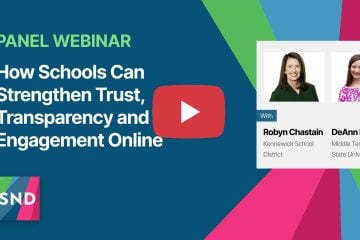In higher education, social media has become more than a communication channel — it’s an extension of the campus experience itself. From recruitment to retention, social platforms increasingly shape how universities are discovered, understood, and trusted.
As we look toward 2026, the social landscape is poised for another evolution. New technologies and shifting audience behaviors will redefine what “connection” looks like for students, alumni, and institutional brands alike.
Here are five trends reshaping the future of university social media — and how Social News Desk (SND) is helping Higher Ed leaders stay ahead of the curve (because isn’t that what it’s all about?).
1. AI-Driven Personalization & Efficiency
Generative AI is quickly becoming standard in higher education marketing — powering everything from post creation to predictive analytics. In 2026, the most forward-thinking universities will use AI not to replace creativity, but to enhance personalization and strategic precision.
Expect to see institutions leveraging AI to:
- Generate adaptive content that resonates differently with prospective, current, and alumni audiences
- Identify the optimal time, tone, and platform for each message
- Predict which campaigns will best influence enrollment, engagement, or giving
But as automation accelerates, maintaining a human-centered brand voice becomes critical. AI can scale efficiency, but only strong oversight ensures authenticity.
2. “Social SEO” and the Age of Discoverable Content
Search is moving social. Gen Z — and soon Gen Alpha — are using TikTok, Instagram, and YouTube as their search engines of choice. The question isn’t whether your university should optimize for social search — it’s how quickly you can start.
Social-first SEO means understanding intent: what people want to know when they type “What’s it really like to go here?” or “How do I pick the right major?” Captions, hashtags, and metadata are the new keywords.
High-performing content looks like:
- Quick, direct answers to frequently asked questions
- “Campus explainer” videos designed for native search
- Snackable stories that connect discovery to decision-making
Fortunately, SND’s analytics makes this easier! The tool empower communicators to identify trending topics and optimize posts for discoverability. This way, you can be sure your content surfaces when audiences are searching most.
3. Authenticity, UGC, and the Rise of the Student Voice
The age of polished marketing is giving way to something more organic — and far more powerful. Students want to hear from people like them, not from institutions talking about them.
In 2026, the most trusted universities will act less like broadcasters and more like curators, amplifying authentic voices across campus. Expect more collaboration with student creators, campus ambassadors, and micro-influencers who bring credibility to your brand narrative.
Bottom line: Student want to connect with other students.
4. Growth of Private & Niche Communities
As mainstream feeds become saturated, meaningful engagement is moving into smaller, community-based spaces — where audiences gather around shared identity or intent.
For universities, this might look like:
- Admitted student Discord channels
- Alumni micro-groups organized by region or discipline
- Faculty- or ambassador-led spaces for mentorship and belonging
These communities are more than new platforms — they’re an opportunity to foster loyalty through exclusivity and genuine connection.
5. Immersive and Interactive Storytelling
Social content is becoming more sensory, more participatory, and more experiential. From AR campus tours to interactive polls, institutions are reimagining what it means to “visit” a university online.
This is the next iteration of brand storytelling — one where audiences don’t just consume content, they co-create it.
With SND’s scheduling, publishing, and analytics tools, your team can experiment confidently across emerging formats (did you know SND supports nine social networks now?)
Lead the Conversation, Don’t Chase It
The universities that thrive on social in 2026 won’t just adapt to change — they’ll anticipate it.
They’ll see social not as a set of channels to manage, but as a strategic ecosystem where technology, authenticity, and institutional mission intersect.
At Social News Desk, we’re helping higher ed communicators future-proof their strategies — turning insights into action, innovation into impact, and content into meaningful connection.
Learn more about how Social News Desk supports universities and colleges. Contact us to get started.




